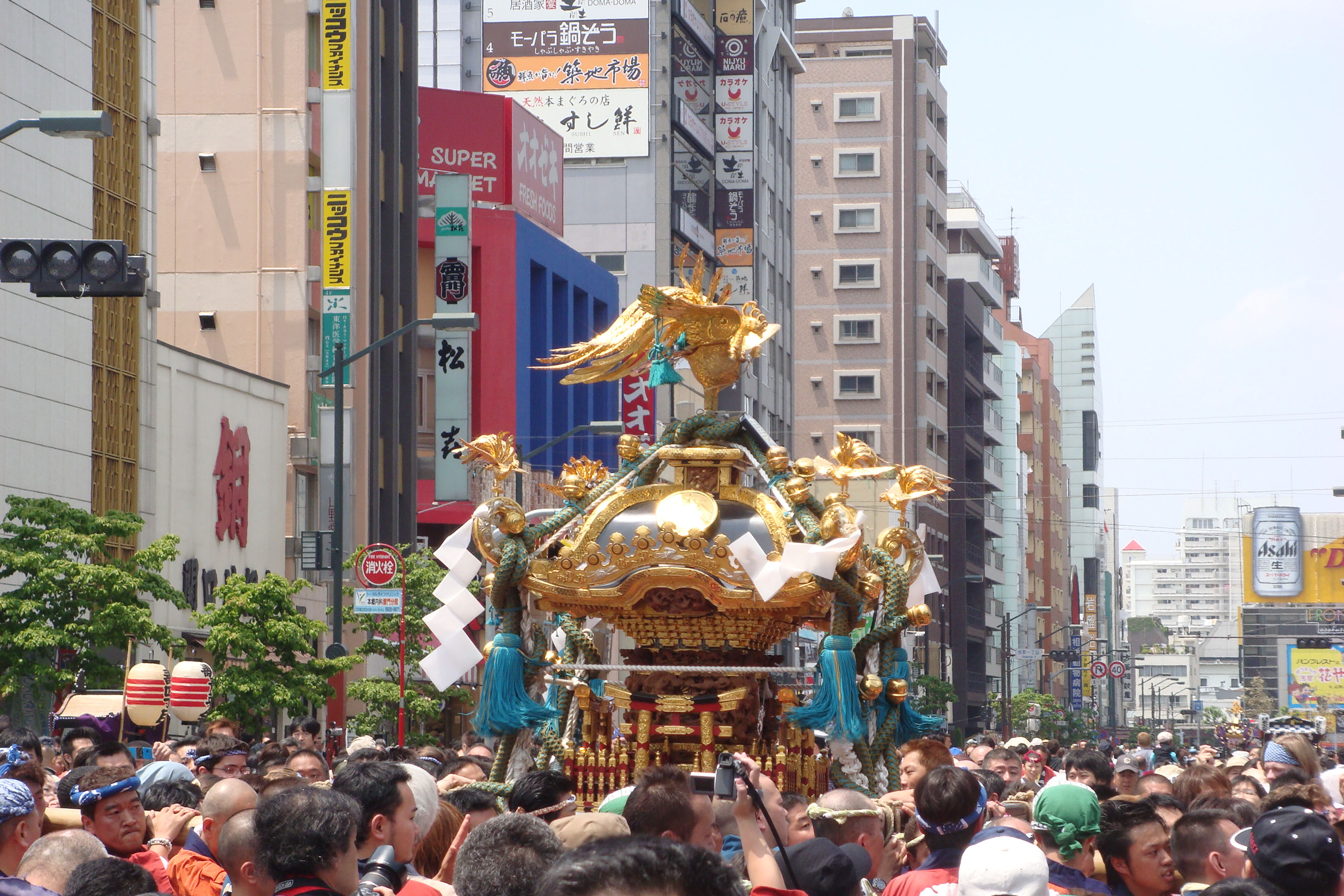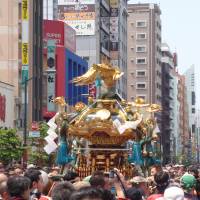The story goes that precisely 1,385 years ago, two brothers, Hinokuma Hamanari and Hinokuma Takenari, were fishing in Sumida River when they discovered in their nets an unlikely object: a statue of the Bodhisattva Kannon. Buddhism itself was still little known in Japan back then, but that didn't deter a local landowner named Hajino Nakatomo, who was so impressed by the discovery that he enshrined the statue on his property. Thus were the humble beginnings of one of Japan's most famous temples, Sensoji in Tokyo's Asakusa district, and those felicitous events are now remembered in the temple's annual (and famously boisterous) Sanja Matsuri, which will be held this weekend.
As always, the highlight of the matsuri (festival) will be the many mikoshi (portable shrines) that will be toured back and forth through Asakusa's rabbit warren of roads. On Saturday the local town associations who will take center stage, parading their own mikoshi.
The grand finale will come Sunday, when three handsome black-lacquer mikoshi owned by Sensoji itself will fan out in different directions — north, west and south — in marathon parades that start at 6 a.m. and don't finish till 8 p.m. The event has been known to attract up to 2 million people over the course of three days, so if you're going to make the trip, you'll likely find it hard to miss.
Sanja Matsuri takes place in Taito-ku, Tokyo, through May 19. For more information, visit www.sanjasama.jp.




